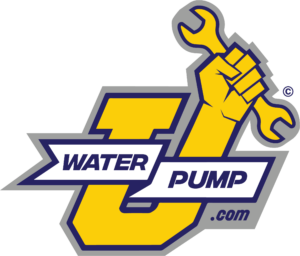A fuel pump is an integral part of a car. A car engine is primarily responsible for burning a combination of air and fuel. The engine receives the air and fuel from two very different sources. The fuel is pumped along a pipe from the tank and then it gets mixed with the air in the carburetor. It is from the carburetor that the engine sucks the mixture of air and fuel. The primary function of the fuel pump is to draw the fuel out of the tank through a pipe to the carburetor.
A fuel pump might be mechanical in nature or it may be electrical. Typically, a mechanical fuel pump is found on the side of the engine. While an electric fuel pump is placed next to the fuel tank or even inside the fuel tank.
How do the electric and mechanical fuel pumps work?
A mechanical fuel camp is primarily driven by the camshaft. Alternately it might as well be driven by a special shaft, which is further driven by the crankshaft. With the turning of the shaft, a cam passes under a pivoted lever eventually pulling the fuel pump up the other end. The other end of the pump is connected loosely to the rubber diaphragm and the whole thing together forms the floor of a chamber in the pump.
An electrical pump is backed by a similar diaphragm and fuel arrangement as that of a mechanical pump. However, instead of a camshaft, it’s a solenoid or electromagnetic switch that actually offers pull on the diaphragm. The solenoid attracts an iron rod, which pulls down the diaphragm thereby drawing fuel into the chamber.
Other aspects of these pumps
It should not really be forgotten that both the electrical and mechanical fuel pumps function only when the carburetors need them to. A fuel pump might as well include plastic gauze filter and bowl (in some cases) to catch the residue or sediment. There is also the air cleaner, which is a box fitted just over the carburetor air intake. It typically contains a replaceable paper filter element.
How do you Identify Problems in Fuel Pumps?
There are some ways to spot problems in fuel pumps. One of the easiest ways to spot discrepancies in this regard is on the open road. If you drive your car at an accelerated speed and the car starts jerking initially and later it resumes the acceleration. This jerking during acceleration is most likely indicating a problem with the fuel pump and it needs to be examined.
You should also watch out for the fuel economy changes for your car. If your car had a good fuel economy and recently the fuel economy started deteriorating significantly without any reason. Do not ignore this particular warning.
Here are a few maintenance tips to ensure longer life of the fuel pump:
- Make sure that you are using branded fuel for healthier pump performance
- Avoid keeping the level of fuel too low inside the pump because it leads to overheating and eventual thermal shock
- In case you are not using the pump for more than a week or so, do use anti-ethanol agent for your pump so that it doesn’t solidify or transform into a gel
Hopefully, the tips and information offered in this write-up are helpful to you in making the right decisions regarding the maintenance of your car.



![[Vehicle Fitment-1]: Compatible with Chevrolet C1500 1996-1999 5.0L/5.7L, C1500 Suburban 1996-1999 5.7L, C2500 1996-1998 5.0L, C2500 1996-2000 5.7L, C2500 Suburban 1996-1999 5.7L, C3500 1996-2000 5.7L, Express 1500 1996-2002 5.0L/5.7L, Express 2500 1...](https://m.media-amazon.com/images/I/51QtKnaDb1L._SL100_.jpg)



